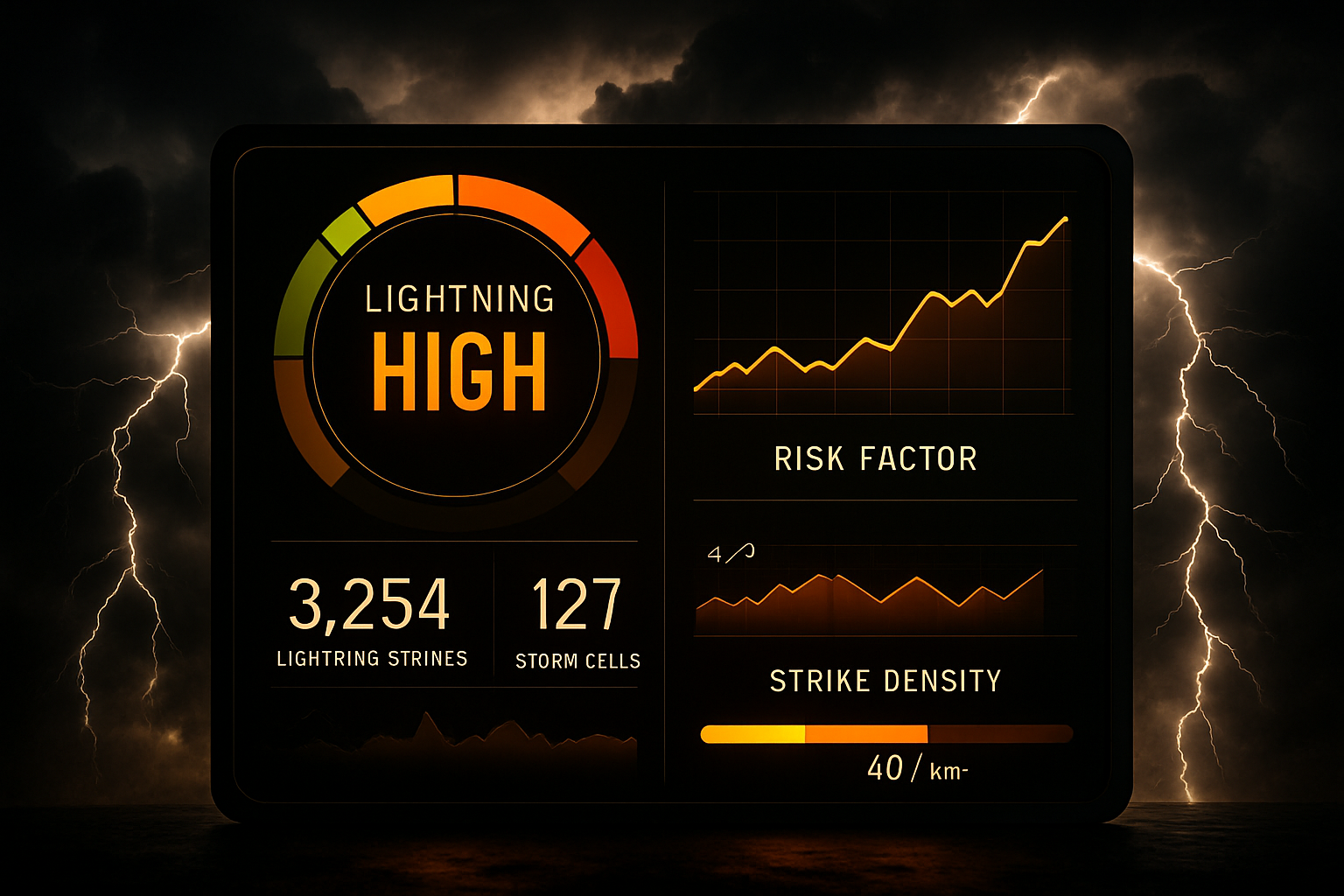NFPA 780 Software: Precision in Lightning Risk Assessment

Strong 8k brings an ultra-HD IPTV experience to your living room and your pocket.
Compliance with NFPA 780 isn't a checkbox. It is a technical mandate, a blueprint steeped in decades of field data, electrical theory, and safety protocol. Lightning risk assessment, when reduced to guesswork or outdated methods, creates vulnerability. Digital tools have recalibrated this process. Among them, NFPA 780 software stands out not through flashy UI but through its structural rigor.
Static Grounding Meets Dynamic Calculations
Traditional assessments once relied heavily on static design tables and heuristics. While serviceable, these lacked the nuance required for complex sites: data centers, petrochemical hubs, or multi-building campuses. Modern NFPA 780 software bridges this chasm. It translates the static mandates of the code into dynamic simulation engines capable of calculating site-specific strike probabilities and exposure profiles.
The principle is simple: when probability meets load data, location-specific is not optional, it’s required. Buildings constructed at elevation, or situated near open terrain, behave differently in storm scenarios than those shielded by nearby structures. NFPA 780 software accounts for this through calibrated lightning risk calculation protocols.
The Calculation Core: Not Just Numbers
At the center sits the calculation engine. Users may input data—structure height, roof material, number of down conductors—but what matters more is how the software weighs these variables. It references both IEC 62305 and NFPA 780 datasets, triangulating risk via stochastic modeling. The result isn’t a pass/fail status but a quantitative risk index.
- Probability of lightning strikes
- Consequences of potential damage
- Risk reduction factor (RRF) with proposed measures
These outputs guide mitigation rather than merely report deficiencies. Without this quantitative backbone, lightning protection becomes a speculative venture.
Risk by the Numbers: Why Calculation Beats Conjecture
Lightning risk calculation should reflect the operational realities of the site. That includes:
Environmental exposure: terrain conductivity, soil resistivity, seasonal storm frequency
Structural vulnerabilities: antenna installations, rooftop HVAC systems, solar panel arrays
Functional criticality: data center vs. parking structure
Where older methodologies apply one-size-fits-all rules, NFPA 780 software integrates GIS data, probabilistic models, and historical strike records. This feeds the lightning risk assessment process with context-rich variables, offering a resolution far beyond static lookup charts.
Audits with Teeth
Insurers, regulators, and safety officers don’t merely require compliance; they expect traceability. NFPA 780 software delivers this via exportable reports with source-level data references. Each risk recommendation links back to specific code clauses and calculation pathways. When challenged in a boardroom or courtroom, this traceability matters.
More critically, this data backbone allows for version control. When a site undergoes structural changes—say, a new rooftop chiller—an updated risk scenario can be generated in minutes. This transforms lightning protection from a set-it-and-forget-it design to a living protocol.
Edge Use Cases: Where Software Proves Itself
In facilities near explosive storage, arc-prone manufacturing, or mission-critical communications, the margin for risk is narrow. In these contexts, NFPA 780 software reveals its full potential:
- Incorporating real-time weather feeds into probability analysis
- Simulating charge accumulation across conductive surfaces
- Generating optimized down conductor paths based on EMF fields
No manual method can match this responsiveness. The software turns theoretical protection into measurable safety.
Interface vs. Intelligence
Not every software labeled “NFPA compliant” meets the same bar. Simpler tools may offer visual lightning maps or basic compliance forms. Useful, but incomplete. The gap lies in intelligence—the capacity to adjust calculations based on input irregularities or environmental deviations.
High-quality NFPA 780 software includes built-in integrity checks. Enter a roof material not in the code? The system flags it. Add a protected zone overlapping an ungrounded structure? Warning issued. This error recognition isn't cosmetic, it prevents latent failure.
Where Lightning Meets Liability
Risk, uncalculated, becomes liability. Regulatory penalties, asset loss, or injury claims often stem not from the absence of protection but from the absence of defensible reasoning. Lightning protection, like fire suppression, must be justified by process—not intuition.
NFPA 780 software constructs that process. It lends clarity to a subject typically treated as atmospheric chance. And while no tool guarantees immunity from nature’s volatility, precision dramatically alters the odds.
Who Needs It?
- Engineers tasked with new construction planning
- Safety managers overseeing multi-site facilities
- Consultants preparing compliance reports
- Insurance auditors validating asset protection frameworks
Each benefits not from automation alone but from the reproducibility of results. A hand-drawn mesh of air terminals might pass visual muster. But under NFPA scrutiny, only documented calculations hold.
Closing Argument: Risk Is Measurable
Lightning doesn’t discriminate, but poorly assessed structures suffer more. The emergence of NFPA 780 software has replaced instinct with analytics. Where once engineers relied on conservative guesswork, they now engage with risk as a measurable, reducible force.
The software doesn't decide protection level. It reveals it. And in high-voltage environments, that distinction isn’t semantic, it's strategic.
For facilities that can’t afford outages or structural surprises, code-aligned lightning risk assessment isn't just compliance. It's continuity.
Note: IndiBlogHub features both user-submitted and editorial content. We do not verify third-party contributions. Read our Disclaimer and Privacy Policyfor details.



